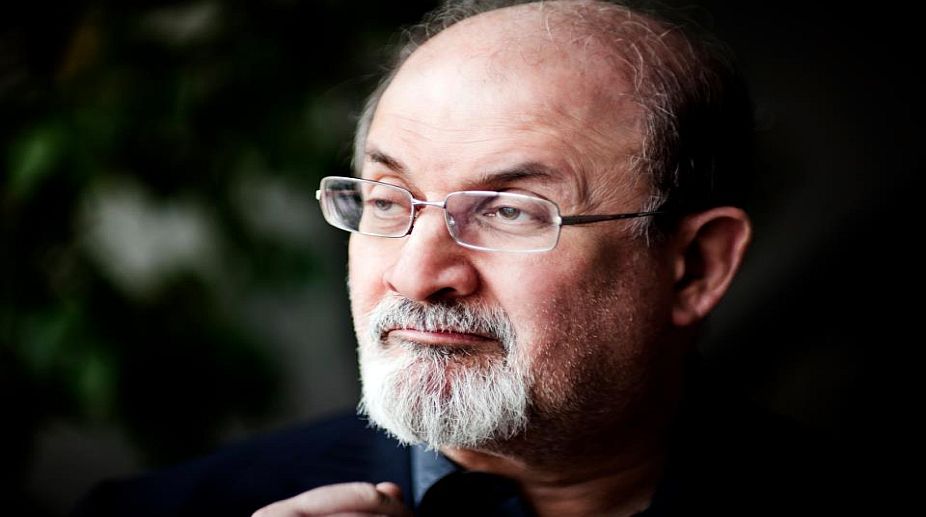The very mention of the name of Salman Rushdie brings with it a lot of academic discussion about not only his merit as one of the most powerful post-colonial writers of our times but also as someone who seems to be always mired in controversies. The editors of the present volume perceive him as a writer of extraordinary magnitude and breadth, and as one of the finest practitioners in recent times of the craft of fiction.
Rushdie’s works cut across geographical and cultural frontiers and overspill the borders that have been erected over the ages between various academic disciplines. They recognise his exceptional virtuosity as a keen observer, and a credible chronicler, of contemporary world history, his enviable projects of cultural translation and the globalised novel, his exploration of the world of permeable frontiers in which we all live, his bold defiance of different kinds of thought police men and perversions of faith that have tried to strangle intellectual and creative freedom down the ages, his representation of the mundane/real through the magical and, last but not the least, his exemplary skill as a superb stylist of the English language.
Advertisement
This anthology brings together articles by both national and international scholars on different perspectives of Rushdie’s works (both fiction and nonfiction) and as such gives a comprehensive and updated introduction to are appraisal of Salman Rushdie as a creative writer. In fact such a lot of critical material is already available on Rushdie, the first question that comes to the reader’s mind before beginning to read this book is “So what is new about him and his works”?
Divided into three sections that include 26 articles, the anthology begins with an interview with a prominent Rushdie scholar, Timothy Brennan, undertaken by Tapan Kumar Ghosh and Sisir Kumar Chatterjee in December 2014 when Brennan was in Europe on a lecture tour. The first section entitled “Rushdie Worldview: Macro Analyses” comprises five articles that deal with some major thematic, theoretical and stylistic aspects of Rushdie’s works. Whereas Bill Ashcroft focuses on Rushdie and the Nation, Tariq Rahaman deals with politics in Rushdie’s novels. On the other hand, Anjali Gera Roy focuses on the magic realistic mode and Tapan Kumar Ghosh on secular Salman and Religious Controversy. The fifth article by Prathim-Maya Dora-Laskey highlights the post-colonial challenge of Rushdie’s post-modern linguistic game.
The long second section of the book aptly titled “Salman Rushdie: Readings of His Fiction” contains 15 essays. These try to map out the author’s literary journey, beginning with his unique mixture of science fiction, fable and adventure story in the debut novel Grimus (1975) to project an alternative vision of human society, and his novel attempts to reclaim his imaginary homelands in Midnight’s Children and Shame, through his transition from the East to the West in The Satanic Verses, The Moor’s Last Sigh and The Ground Beneath Her Feet and delineation of mass migration from the third to the first world and its aftermath in Fury and Shalimar the Clown to his exquisite snapshot of globalisation in The Enchantress of Florence and Two Years Eight Months and Twenty Eight Days. The editors have tried to include at least one article on each of his novels and collection of short stories. The scholars who have contributed in this section are Rakesh Sarkar, Taj-ddin Ahmed, Anasuya Bhar, Nalini Natarajan, Neil Ten Kortenaar, Arindam Ghosh, Abhijit Gupta, Nishi Pulugurtha, Chidananda Bhattacharya, Sisir Kumar Chatterjee, Sajal Kumar Bhattacharya, Pier Paolo Piciucco, Samrat Laskar and Adam Perchard.
Rushdie’s non-fiction writings are incisive, committed and often very funny. They offer a unique vision of politics, literature and culture in the last decades of the 20th century and the beginning of the 21st. The six articles that comprise the third section are on Rushdie’s nonfictional prose writing including his memoir Joseph Anton, his plays/screenplay and edited volumes of American short stories and post-1947 Indian writings in English, which have either been ignored or marginally touched by the available titles on the author. Siddhatha Biswas tries to locate The Jaguar Smile as a moment in history, Subir Dhar writes on Homelands and the Imaginary, Sandip Ain tries to read Step Across this Line as collective non-fiction, Debashis Lahiri on the choices of Rushdie as editor, and Anindita Mitra attempts to reimagine the magic by perusing the audio-visual representations of Midnight’s Children and Haroun and the Sea of Stories.
Mapping out the Rushdie Republic differs from the existing studies on the work of Salman Rushdie by dint of its seriousness of intent and profundity of content. Every major work of the writer is paid due attention as separate articles are devoted to every aspect of his literary persona. Thus this book attempts an objective and updated survey of Rushdie as a creative writer, through a balanced evaluation of his entire literary oeuvre (that the editors euphemistically call “Rushdie Republic”).
The editors need to be congratulated for undertaking a Herculean task of trying to accumulate all sorts of writings on Salman Rushdie within two covers. The only lacunae that this reviewer found is that all the articles do not adhere to the same stylistic method; whereas some include a “Notes” section at the end, others opt for the more accurate “Works Cited” pattern. A uniform style would have made the volume more attractive.
The reviewer is professor of English at visva-bharati university











